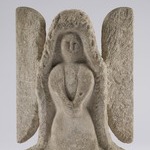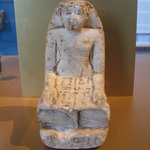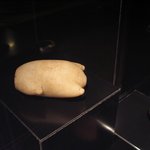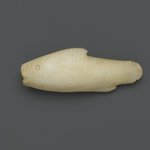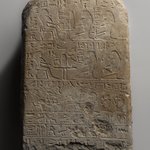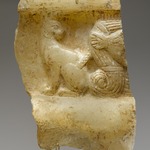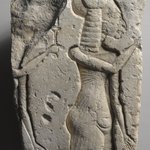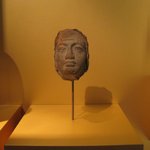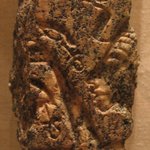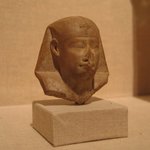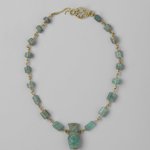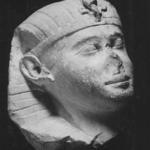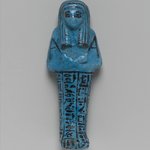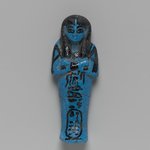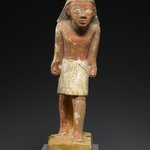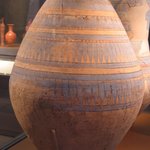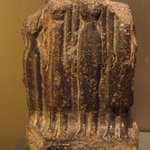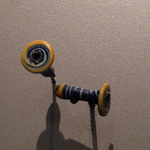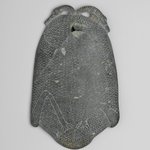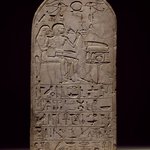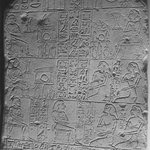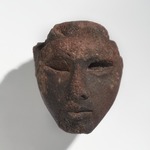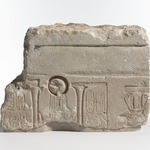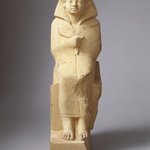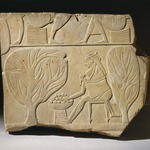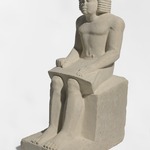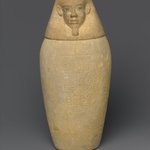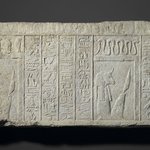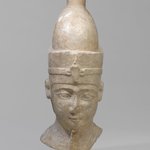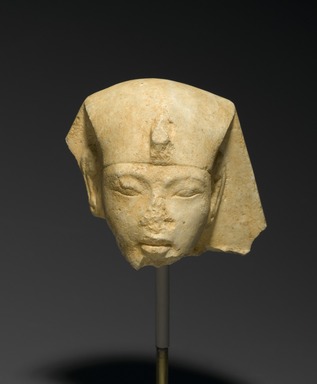
Head from a Shabty of King Akhenaten
Egyptian, Classical, Ancient Near Eastern Art
The four stone shabties made for King Akhenaten illustrate the royal ideal in the Eighteenth Dynasty. They are a representative sample of the materials used to create hundreds of shabties for this king. Each stone type symbolizes a divinity related to the afterlife. For example, the red shabty associates Akhenaten with Re, the sun god, while the black granite one links him to Osiris, represented as the fertile soil of Egypt.
MEDIUM
Limestone
DATES
ca. 1352–1336 B.C.E.
DYNASTY
Dynasty 18
PERIOD
New Kingdom, Amarna Period
DIMENSIONS
2 13/16 x 2 3/4 x 2 3/4 in. (7.2 x 7 x 7 cm) (show scale)



COLLECTIONS
Egyptian, Classical, Ancient Near Eastern Art
ACCESSION NUMBER
33.52
CREDIT LINE
Charles Edwin Wilbour Fund
CATALOGUE DESCRIPTION
Head of Akhenaten probably from an ushabti but possibly from a statuette. Royal uraeus on forehead.
Condition: The lower part of the chin, the right side of the headdress and the neck and back of the headdress are missing. Nose and uraeus chipped.
MUSEUM LOCATION
This item is not on view
CAPTION
Head from a Shabty of King Akhenaten, ca. 1352–1336 B.C.E. Limestone, 2 13/16 x 2 3/4 x 2 3/4 in. (7.2 x 7 x 7 cm). Brooklyn Museum, Charles Edwin Wilbour Fund, 33.52. Creative Commons-BY (Photo: Brooklyn Museum, 33.52_PS2.jpg)
IMAGE
overall, 33.52_PS2.jpg. Brooklyn Museum photograph, 2007
"CUR" at the beginning of an image file name means that the image was created by a curatorial staff member. These study images may be digital point-and-shoot photographs, when we don\'t yet have high-quality studio photography, or they may be scans of older negatives, slides, or photographic prints, providing historical documentation of the object.
RIGHTS STATEMENT
Creative Commons-BY
You may download and use Brooklyn Museum images of this three-dimensional work in accordance with a Creative Commons license. Fair use, as understood under the United States Copyright Act, may also apply.
Please include caption information from this page and credit the Brooklyn Museum. If you need a high resolution file, please fill out our online application form (charges apply).
For further information about copyright, we recommend resources at the United States Library of Congress, Cornell University, Copyright and Cultural Institutions: Guidelines for U.S. Libraries, Archives, and Museums, and Copyright Watch.
For more information about the Museum's rights project, including how rights types are assigned, please see our blog posts on copyright.
If you have any information regarding this work and rights to it, please contact copyright@brooklynmuseum.org.
RECORD COMPLETENESS
Not every record you will find here is complete. More information is available for some works than for others, and some entries have been updated more recently. Records are frequently reviewed and revised, and we welcome any additional information you might have.

